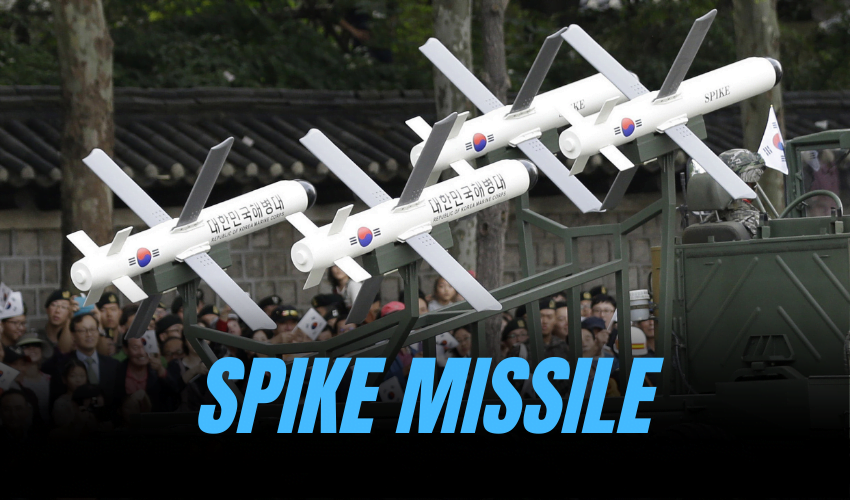Explained: Why Israel’s Spike Missiles Are so Good

The Spike missile has established a reputation for itself ever since it was first used. This is why it outperforms so many other anti-tank weapons. On October 6, 1973, nearly 800 tanks from three mechanised infantry divisions rushed into the Golan Heights, crossing the Israeli border.
The overwhelming mass of armour caused heavy casualties among the defending Israeli forces; every company commander in the defending Barak Brigade was killed in battle during the onslaught.
While Israeli troops eventually prevailed, the incident prompted some members of the Israel Defense Forces (IDF) to consider how to stop massed tank formations. They eventually created the Tamuz missile with the support of Rafael Advanced Defense Systems.
Outside of Israel, this missile is currently known as the Spike Non-Line-of-Sight (Spike-NLOS), and it is the first member of the Spike missile family. Since then, the Spike family has grown to become one of the world’s premier antitank guided weapons, with significant export success: it is now used by many of the world’s most powerful military, including the United Kingdom, Germany, South Korea, and India. How does the Spike, on the other hand, work? And what makes the Spikes so successful?
The Spike-NLOS, the first Spike missile, was a game-changing weapon in its field. The Spike-NLOS was the first fielded surface-to-surface missile to employ television guidance. While television-guided missiles for aeroplanes had existed before, the Spike-NLOS was the first fielded surface-to-surface missile to use TV guidance.
This was due to its initial purpose: to use precision strikes to stop massed-armor pushes from practically artillery distances. The Spike-NLOS features a tiny fiber-optic connection connecting the launching vehicle to the missile, as well as a camera built within the missile itself, to do this. The Spike-NLOS operator can see a view of the battlefield through this datalink.
The missile is subsequently guided to the target by the operator. Each missile can operate as reconnaissance due to the operator’s vision while the missile is in flight. The Spike-NLOS launcher can stay fifteen to thirty kilometres distant from the target while yet delivering a precise assault (depending on the missile generation).
The missile may retarget while in flight thanks to the TV guidance, which merely requires the operator to steer to a different target. It also doesn’t need a “lock” to launch; all the operator needs are the target’s rough coordinates, allowing Spike-NLOS to operate as precise artillery. Spike-NLOS equipped vehicles are assigned to an elite unit of the IDF’s Artillery Corps to represent this duty.
Spike-NLOS later versions included full homing capability, allowing the missile to self-guide while also allowing the operator to stay “in the loop” to correct and steer the missile in mid-flight. It also allows the missile to lock on after launch (LOAL). This is known as “Fire-and-Observe” in Israeli literature.







Facebook Comments